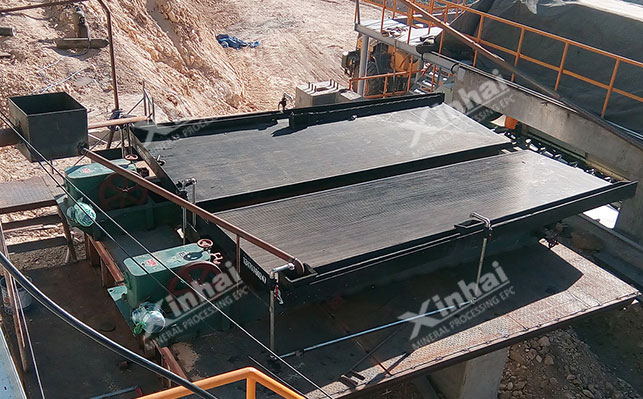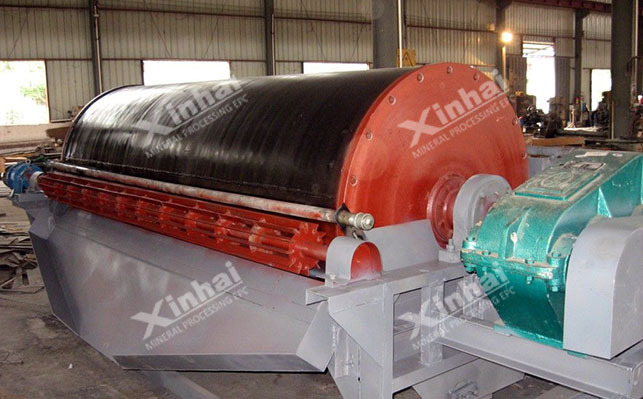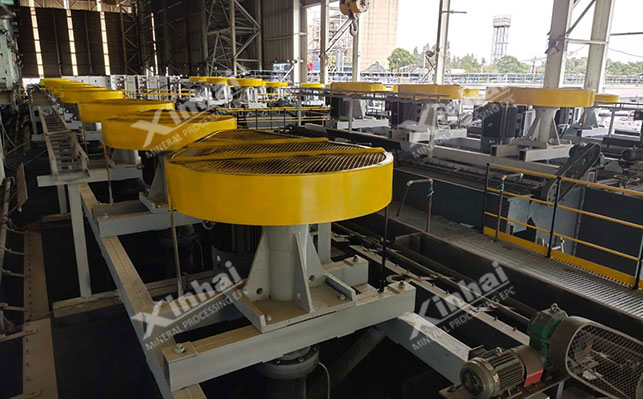
15311826613
Click to add WeChatChromium is widely used in the fields of metallurgy, refractory materials and chemical industry, and is a common important metal ore for industrial use. At present, although more than 30 types of chromium-containing mineral elements have been discovered, only chromite has mining value, and chromite is mostly composed of spinel, magnesia-chrome (iron) ore, iron spinel, chromite and magnetite. The ore elements are very complex and difficult to be separated. Therefore, the selection of chromite beneficiation process is particularly important. This article will focus on the introduction of chromite beneficiation process.
According to the different mineral properties, the beneficiation process of chromite mainly includes four types: gravity separation, magnetic (electric) separation, flotation and chemical process.
Since chromite has a high density and is mostly in the form of block, strip and patchy coarse grains, gravity separation is often used as the main method. Common gravity separation processes include: shaking table and jigging. The shaking table has higher separation accuracy and is more widely used.

Shaking table gravity separation of chromite: Shaking table gravity separation is mostly suitable for processing fine-grained chromite ore, and often can obtain a higher enrichment ratio, but its processing capacity is low.
Jig re-selection of chromite: The required equipment is a jig, which is suitable for processing coarse and medium-sized chromite ores, but is not as effective as a shaking table when processing fine particles.
In addition to the two methods of shaking table and jigging, heavy medium cyclones, large-angle hydrocyclones, large-angle hydrocyclones with inner rotors, cone concentrators, spiral concentrators, and centrifugal concentrators can also select chromite ores, but their selection effects are not ideal. Usually, multiple re-selections are used to select chromite ores.
Chromite has weak magnetism and can be selected by strong magnetic separation or weak magnetic separation processes, but it will only show magnetism under low temperature conditions. Therefore, magnetic separation can only be used under specific conditions, and is generally used in conjunction with the re-selection process.

Flotation is mostly suitable for selecting fine-grained chromite, especially minerals of 20-200Ixm. The flotation process has a certain recovery effect. The flotation operation is long and anionic collectors (such as oleic acid, tar oil, etc.) and cationic collectors (dodecyl ammonium chloride, C16~C18 mixed amines, etc.) are used to capture chromite minerals.
In lower-grade chromite ores, there is a fine-grained interbedded structure between chromite and gangue minerals, which requires fine grinding to dissociate useful mineral monomers, which generally produces a large amount of ore mud. When using cationic collectors to float chromite in alkaline slurry, pre-de-sludge is an indispensable process, but the loss of chromite in the fine mud is very large, and in many cases the loss rate is as high as 40%. Therefore, it is economically unreasonable to apply this method in industry.

Chromite can be floated in alkaline medium using anionic collectors without pre-desliming, but the following conditions are required to make the process go smoothly: fully disperse the slurry, selectively flocculate the minerals, and preferentially float chromium minerals. However, during grinding, the minerals must be fully dissociated, and alkali (caustic soda) must be added to ensure that the pH value of the slurry is equal to 11.0~11.5; after that, a dispersant must be added to form a stable dispersion system, and then a selective flocculant must be added to the dispersed slurry to flocculate the fine-grained gangue. In addition, it is necessary to prevent the formation of anionic collector films on the flocculated gangue minerals to create good conditions for the preferential flotation of chromite.
One of the purposes of chromite chemical beneficiation is to increase the Cr/Fe ratio of the concentrate produced by the physical method, and another purpose is to directly treat certain chromite ores that cannot be treated by physical methods or are uneconomical to treat by physical methods. The main methods of chromite chemical beneficiation are: selective leaching, oxidation-reduction, smelting separation, sulfuric acid and chromic acid leaching, reduction and sulfuric acid leaching and other methods. The specific process to be selected depends on the properties of the chromite ore.
The above is an introduction to the four common chromite beneficiation process flows. In the actual beneficiation process, due to the complex nature of chromite ore, a single beneficiation process is difficult to obtain a more ideal chromite concentrate. Usually, a combined method is used for separation, such as multiple gravity separation, gravity separation-flotation separation, gravity separation-magnetic separation, magnetic separation-flotation separation, and physical-chemical separation.